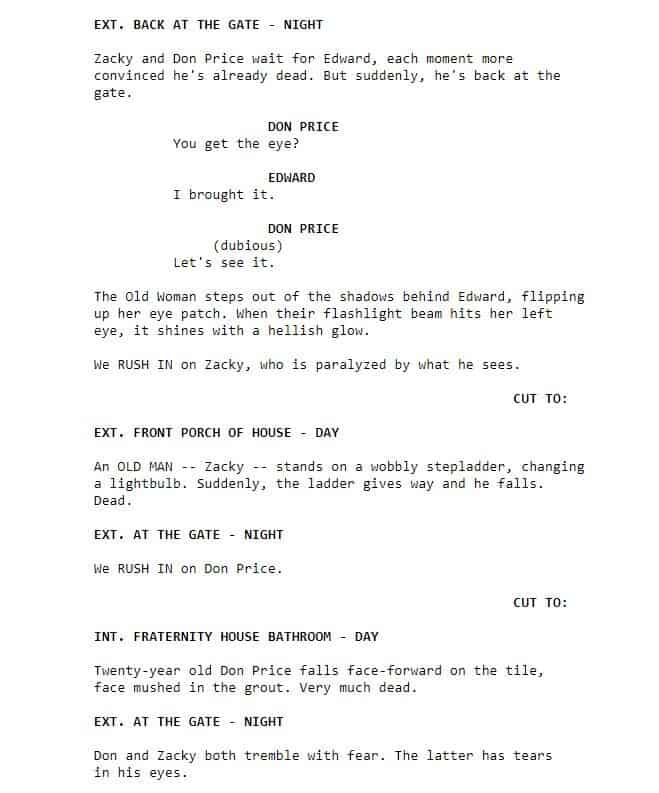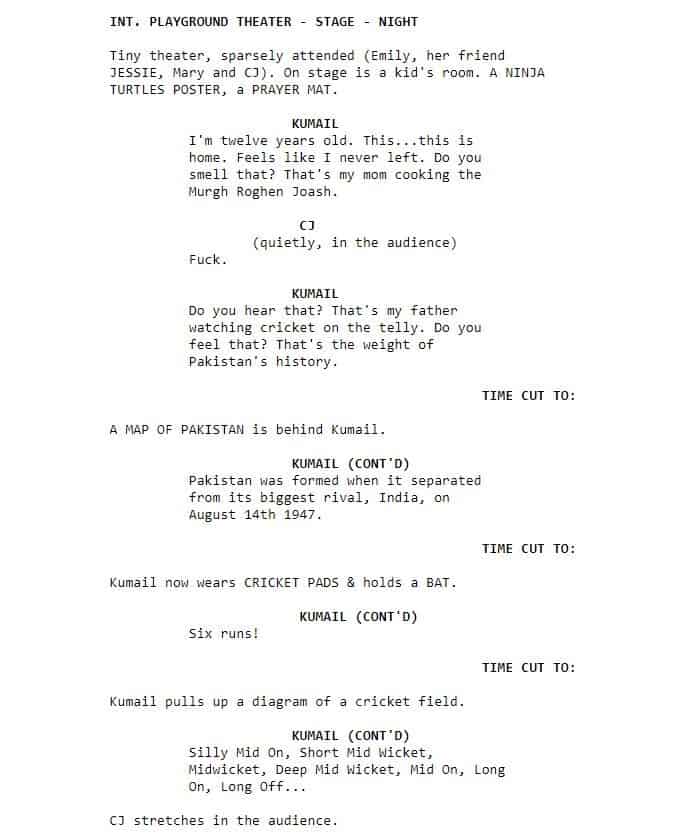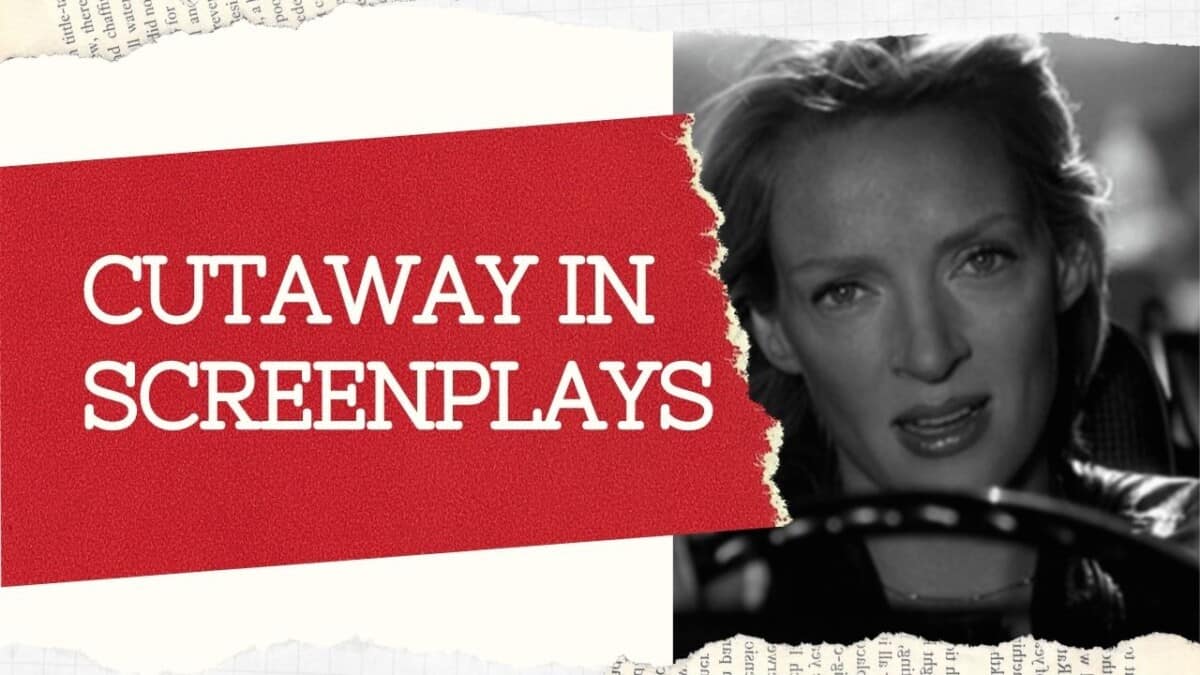A cutaway is a mini scene in screenplays that cuts from the main action to a short scene or detail that gives information to change the perspective of the main action for the reader.
How do you write one?
How do you write a cutaway in a screenplay? You write a cutaway in a script by writing “CUT TO:” on the right-hand side of a screenplay. Then when finished, write “BACK TO:” also on the right side to return to the scene.
Example:
INT. JOHN'S ROOM - DAY
John flips through his new comics while stuffing Cheetos in his mouth. Without a care in the world.
CUT TO:
INT. JOHN'S KITCHEN - DAY
The oven bursts into flames.
BACK TO:
INT. JOHN'S ROOM - DAY
John pauses his joy. He sniffs the air—storms out the room.
In the example above, you can see that CUT TO: and BACK TO: show how short the image in the middle is. We use this when what we are cutting away to is quick. Any longer than a couple of lines, it might as well be its own scene.
But what about if the cutaway was happening in the same room? Or it was in the middle of an action scene. Keep reading to find out.
Multiple ways to Write a Cutaway in a Screenplay
Remember, screenwriting format is a set of guidelines and change with the decade. So there are a lot of acceptable formats for this technique. In this section, we will discuss every single one.
1.) The Insert Cutaway
They are generally used for quick cutaways, only a couple of seconds happening in the same location. This version requires no scene heading because the insert is the heading.
These are also done for technology like viewing text messages and computer screens.
Example:
INT. JOHN'S ROOM - DAY
John flips through his new comics while stuffing Cheetos in his mouth. Without a care in the world.
INSERT - A SPIDER
The spider crawls up John's leg and into his pants.
BACK TO SCENE
John freezes.
2.) The Close-up Cutaway
There are several ways to do a close-up in a script, but you would write it just like an insert for a cutaway.
Example:
INT. JOHN'S ROOM - DAY
John flips through his new comics while stuffing Cheetos in his mouth. Without a care in the world.
INSERT - SUPERMAN COMIC BOOK
Superman passionately kisses Louis Lane.
BACK TO SCENE
John takes this in.
3.) Action Scene Cutaway
So you’re creating an action scene, and multiple things are going on at once. Instead of writing many CUT TO:’s and INSERTS, you can use the new shot as its own mini-scene heading.
Example:
INT. RAVEN'S FOOTBALL STADIUM - DAY
Both the Ravens and the Colts line up on the twenty-yard line. The Ravens QUARTERBACK lines up under center. Twenty seconds left on the clock. He hikes the ball.
Two seconds later...
DOWN THE FEILD
The RECEIVER Scurry's pas the defender.
AT THE TWENTY YARD LINE
The Quarterback taps the ball and gets ready for a final heave. A defensive LINE MEN closes in, breathing down the Quearterbacks's neck.
He spins off, shaking the linemen out of his shoes—the play breaks.
DOWN THE FEILD
The receiver changes directions. His eyes get big.
I didn’t finish this example, but you get the point. Every time we cut away to a new place, we use that new place as a mini-scene heading.
Examples of Cutaways from Professional Screenplays
Below are two examples of cutaways. I like these examples because they use them multiple times to show progressions in time before a “cut back.”

Now time for the second example.

The only reason to Cutaway in a Screenplay
In screenwriting, whatever you write has to be necessary to the story. So ask yourself:
“What information is the reader getting with this cutaway?”
“Will the script still work without the information given?”
If you have a legit answer for the first question and a firm “No” for the second answer, then write it. Remember, the point is to translate information, not be stylish.
Now it’s time to hear from you:
Did I miss anything?
In what ways have you seen cutaways done in the past?
Whatever your answer is, let’s hear it in the comments below.

